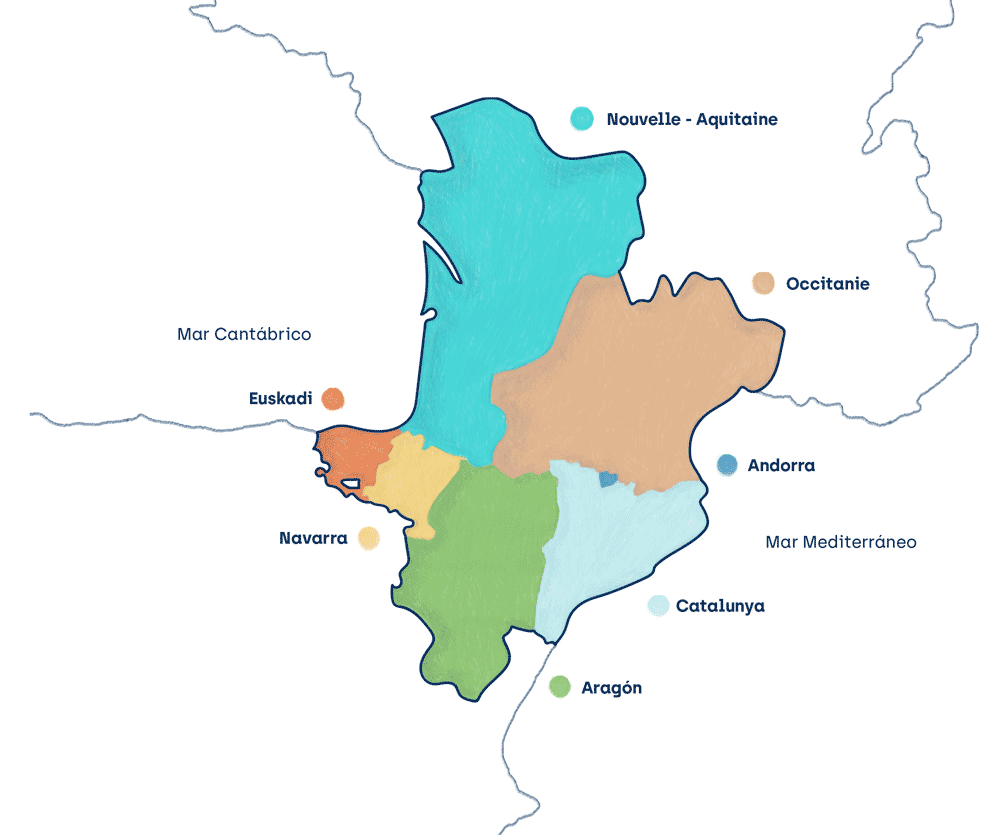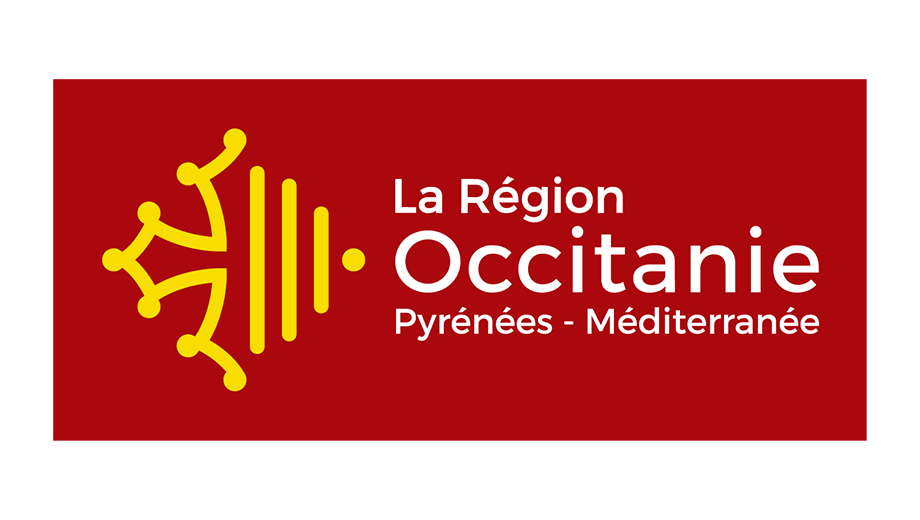LIFE Technical Assistance: A climate action
cooperation strategy
 Vulnerable
Vulnerable
The Pyrenees is a mountainous bioregion that is particularly vulnerable to the effects of climate change.
 Ecosystems
Ecosystems
In general, mountainous regions are places with a wide variety of ecosystems in which the average annual temperature is increasing faster than the global average.
 Impact
Impact
Climate change causes tremendous impacts on biophysical and socio-economic systems like flora, fauna, water resources, energy, tourism, as well as farming and agropastoralism.

Aware of this, seven territorial policies in France, Spain, and Andorra overlap when it comes to climate change in the Pyrenees.
However, the majority of these policies do not take into account two differential factors:
- 1 The nature of the mountain region
- 2 A cross-border focus
As such, this project works to define a cross-border strategy that is valid for the entire region:
The Pyrenees
Climate Change Strategy
The Pyrenees Climate Change Strategy is a plan focused on cross-border action to adapt to climate change while also integrating some mitigation measures.
-
Pyrenean
bioregion-
ClimateRead more
Climate
A. Having updated, analysed climate information that is accessible for all Pyrenees region stakeholders
B. Taking advantage of international networks to highlight mountain climate change vulnerability
-
Resilient
natural
spacesRead moreResilient natural spaces
A. Ensuring the resilient management of Pyrenean rivers and good water quality, particularly at river headwaters
B. Tackling the progressive loss of biodiversity and landscapes due to global and climate changes
C. Anticipating emerging diseases and infestations
D. Facing climate extremes to preserve ecosystem services
-
Population
and territoryRead morePopulation and territory
A. Ensuring optimal levels of preparation, prevention, and training for climate extremes, emerging diseases, and natural hazards
B. Taking advantage of emerging Pyrenees region opportunities in the face of a demographic challenge
C. Reaching optimal levels of public environmental education and awareness on climate change
-
Adapted
mountain
economyRead moreAdapted mountain economy
A. Maintaining tourism appeal while taking into account irreversible changes to the landscape, among others
B. Ensuring the performance and viability of the sectors at higher climate risk (agriculture, pastoralism, and the forestry sector)
C. Taking advantage of emerging mountain economy opportunities (renewable and efficient energy, biomass, the circular economy, new crops)
-
GovernanceRead more
Governance
A. Maintaining and adapting the OPCC Governance system
B. Strengthening more resilient systems of operations and organisation
C. Increasing the visibility of the Pyrenees in terms of climate change and participating in European and international networks
-
The Pyrenees Climate Change Strategy is a plan focused on cross-border action to adapt to climate change while also integrating some mitigation measures.

A. Having updated, processed climate information that is accessible for all Pyrenees region actors
B. Taking advantage of international networks to increase the visibility of mountain climate change vulnerability
A. Ensuring the resilient management of Pyrenean rivers and good water quality
B. Tackling the progressive loss of biodiversity and landscapes due to global and climate changes
C. Anticipating emerging diseases and infestations
D. Facing climate extremes to preserve ecosystem services
A. Ensuring optimal levels of preparation, prevention, and training for climate extremes, emerging diseases, and natural hazards
B. Taking advantage of emerging Pyrenees region opportunities in the face of a demographic challenge
C. Reaching optimal levels of public environmental education and awareness on climate change
A. Maintaining tourism appeal while taking into account irreversible changes to the landscape, among others
B. Ensuring the performance and viability of the sectors at higher climate risk (agriculture, pastoralism, and the forestry sector)
C. Taking advantage of emerging mountain economy opportunities (renewable and efficient energy, biomass, the circular economy, new crops)
A. Maintaining and adapting the OPCC Governance system
B. Strengthening more resilient systems of operations and organisation
C. Increasing the visibility of the Pyrenees in terms of climate change and participating in European and international networks
Working together to ensure the Pyrenees region is a resilient territory by 2050 when it comes to the effects of climate change.
What does a resilient territory mean?

A Pyrenees region with diverse environmental resources that are shared and managed in a sustainable way.

A Pyrenees region whose economy has made a successful ecology, energy, and climate transition.

A Pyrenees region whose land planning and prevention systems protect residents and public health against climate phenomena and risks.

A Pyrenees region that acts as carbon sinks, thereby contributing to the climate neutrality of its dependant regions.
Founding principles

1. Cross-Border
cooperation
.

2. Synergistic actions
with the CTP’s
Pyrenees Strategy

3. Knowledge
generation
and transfer

4. Innovative
actions
.

5. European
and international
visibility

Download the
Pyrenees Climate
Change Strategy here

Take part
You can take part in the creation of the Pyrenees Climate Change Strategy by sending us your contributions.
Take part
LIFE AT-CC PIRINEOS
All of the LIFE
Pyrenees CC Technical Assistance
project’s technical data
CTP partner entities
Comprised of seven territories, the Working Community of the Pyrenees Consortium is the sole partner beneficiary:






